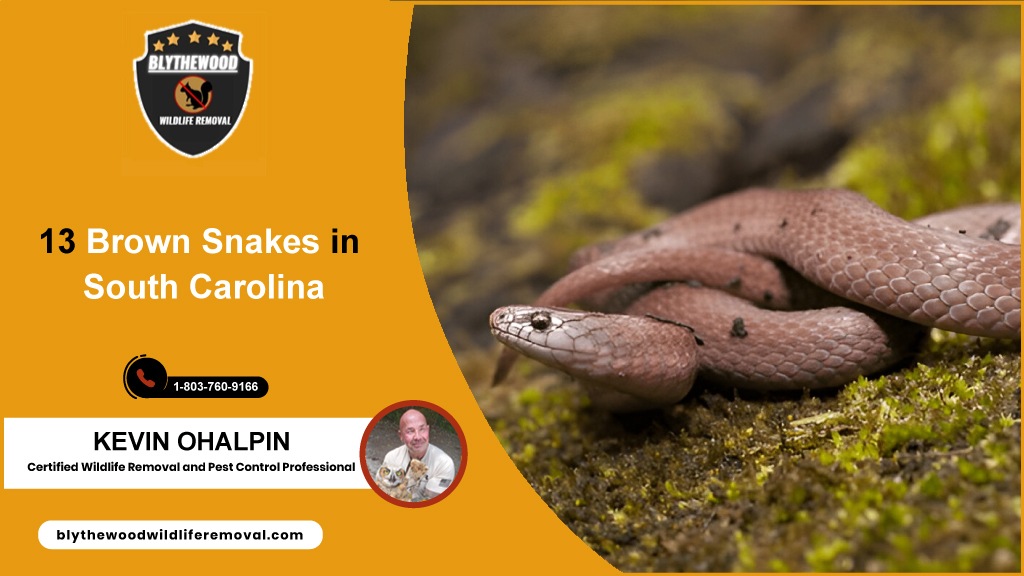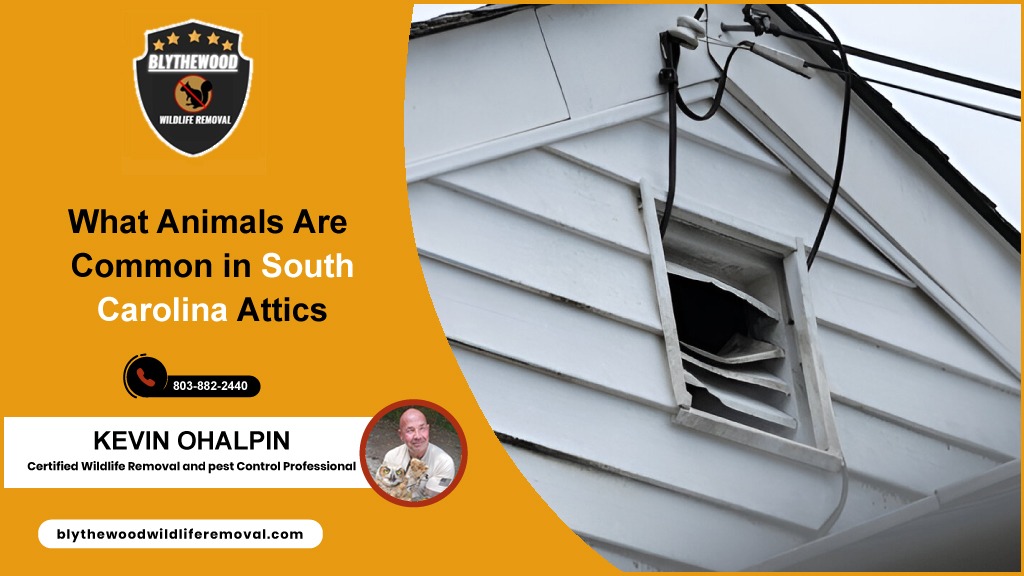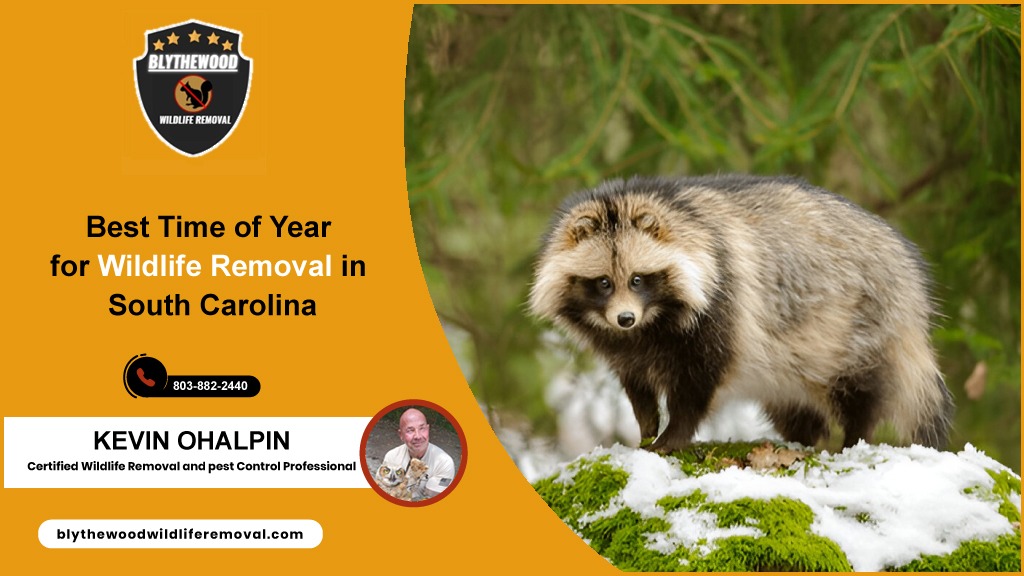
Wild Boars in South Carolina – A Living Nightmare For Folks
April 4, 2025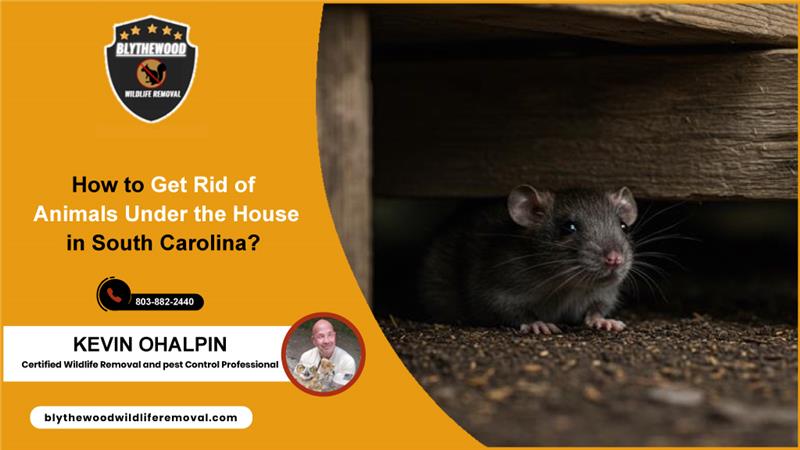
How to Get Rid of Animals Under the House in South Carolina?
July 22, 2025Let’s be honest! People are afraid of snakes. A single sight during an encounter is enough to send chills down the spine.
Several factors contribute to this fear. One of them is the snake’s color. The patches and color patterns on the snake may look disturbing or frightening to some people.
Well, this is not the sole reason we fear snakes; it is a considerable factor.
This topic will focus on brown snakes in South Carolina (SC). Some are dangerous, while others pose no threat. Some are exclusively brown, while others have variations.
There are 38 different snake species in SC, and not all of them are brown. Brown snakes can be further divided into two groups: those that are uniformly or primarily brown and those that may have brown color or patches on their bodies.
Continue reading to get exposure to these lurking beings.
Primarily brown snakes in South Carolina
Dekay’s Brown Snake
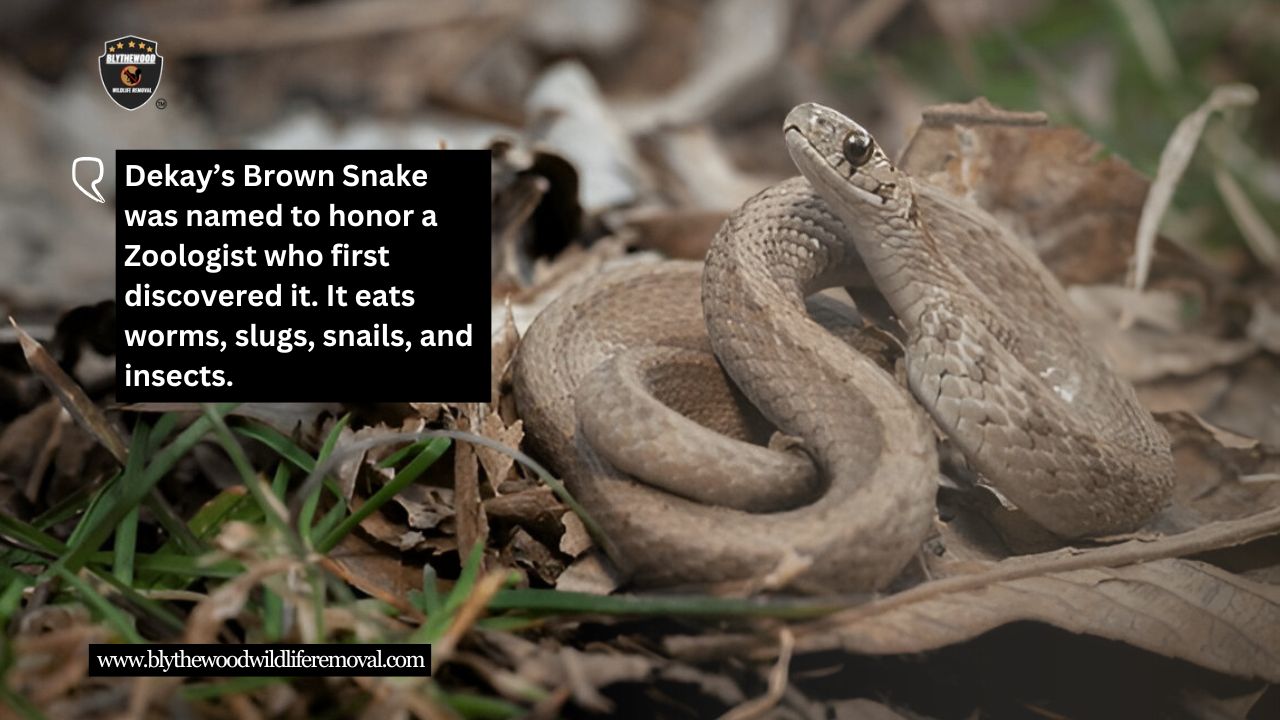
Dekay’s brown snake is very small and harmless. It falls in the category of the smallest snakes on the planet Earth. They are often light brown or grayish-brown. Their average size is 12 inches while adults can reach up to 20 inches (unusual).
It is commonly found under rocks, leaf litter, and boards. Their preferred habitats are grasslands, wetlands, and forests.
This snake was named to honor a Zoologist who first discovered it. It eats worms, slugs, snails, and insects.
Because of their small size and non-venomous nature, they have several predators, such as crows, hawks, opossums, birds, large snakes and frogs, and weasels.
They love moisture, so you are most likely to find them in yards, parks, and moist areas.
Instead of fearing this snake, thank it for helping control worm and insect populations in your garden. It cannot harm you or your pets.
Rough Earth Snake

It is a harmless brown snake native to the Southeastern US. They have also been spotted in a reddish or gray color. However, there are no patterns on their body. A brown rough earth snake will be uniformly brown.
Their average size is 7 inches but can grow up to 10 inches. Due to their small size and harmless nature, their natural predators often eat them.
Their females are bigger than males. These snakes are often found under rocks, stones, leaf litter, and logs.
Its diet primarily includes worms, small frogs, and insects. It also helps keep the earthworm population in check.
Like Dekay’s snake, this brown snake in South Carolina is among the smallest snakes.
Smooth Earth Snake
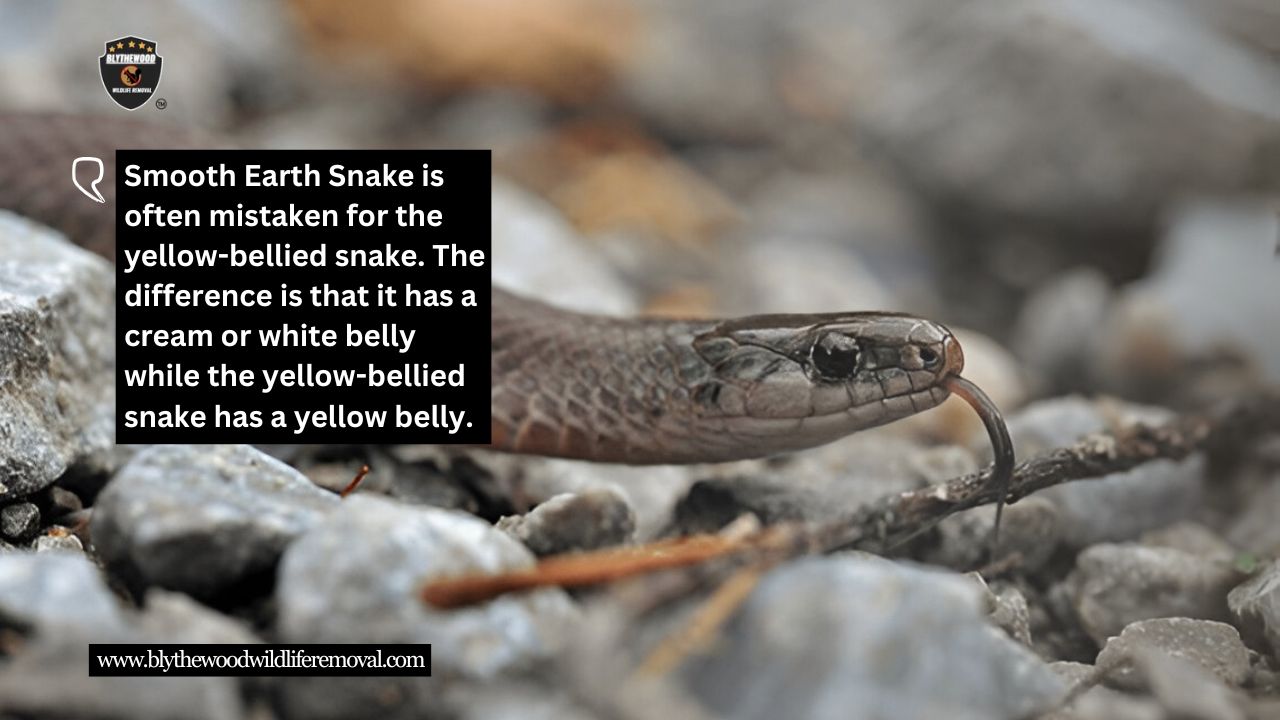
It is often mistaken for a rough earth snake, and it makes sense. You will get confused if you see both snakes because they are the same size. It can grow up to 10 inches.
They are found in a completely reddish brown or brown color with no markings. It is a non-venomous and harmless snake; it does good for humans.
It primarily eats earthworms but can also prey upon small arthropods.
Due to their color, they smoothly camouflage in the forest.
It is often mistaken for the yellow-bellied snake. The difference is that it has a cream or white belly while the yellow-bellied snake has a yellow belly.
Mole Kingsnake

Also known as the brown kingsnake, it is often mistaken for the yellow-bellied kingsnake due to its similar look, but both are different. Both are harmless and do not possess venom. They are secretive snakes that can bite, but their bites are not dangerous.
Mole kingsnake usually grows up to 42 inches. It can be gray, orange, or brown.
Due to their slightly larger size than upper snakes, they can eat other snakes, rodents, lizards, and small amphibians.
There are several species of kingsnakes. All are non-venomous. The title “kingsnake” is given to it because it eats other snakes.
Mole kingsnakes are good at detecting vibrations, which helps them detect underground movements of rodents. They mostly live underground in burrows.
Having a mole kingsnake in your yard is beneficial.
Brown Water Snake
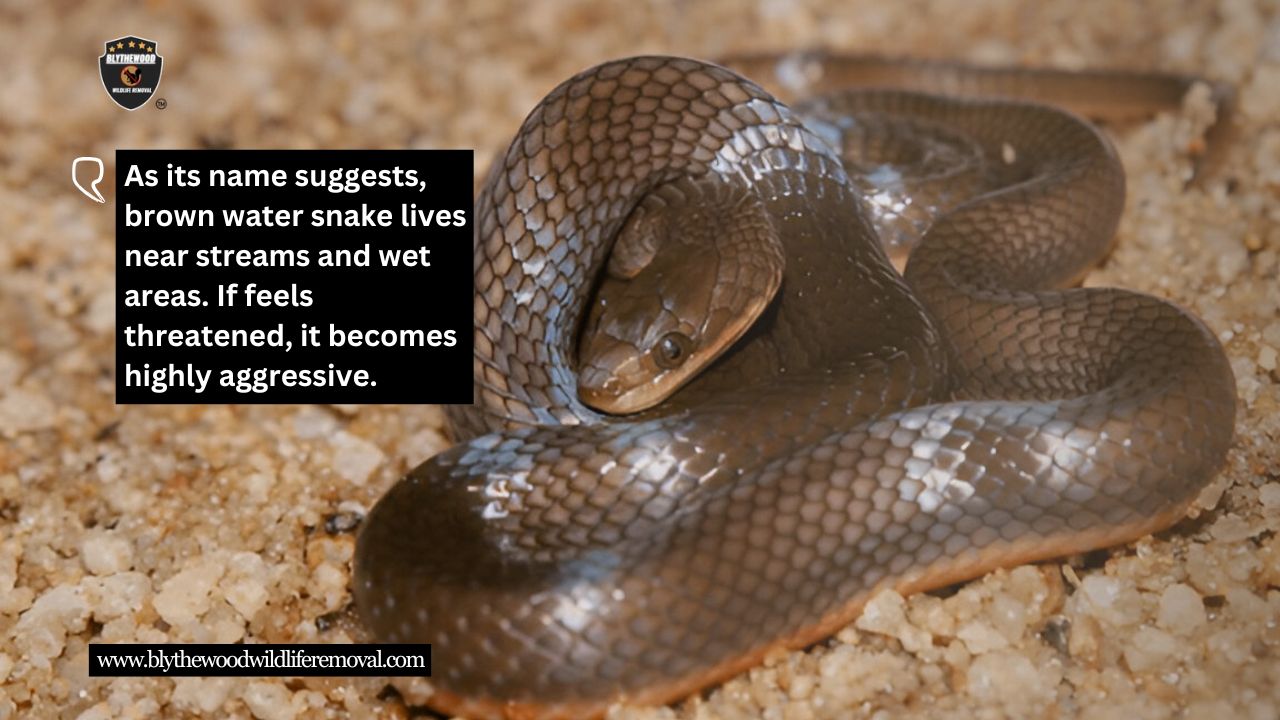
Brown water snakes are even larger than mole kingsnakes. Some can grow up to 70 inches, but this is rare. Their average length is 40 inches.
These snakes are brown, rusty, or light brown with dark blotches over their backs. Their belly is lighter in color than their back.
It has several other common names, but brown and southern water snakes are prominent.
The brown water snake’s diet primarily includes fish and small snakes.
As its name suggests, it lives near streams and wet areas. Its conservation is least concerned. If it feels threatened, the brown water snake becomes highly aggressive.
Snakes in different colors, including brown
Eastern Copperhead
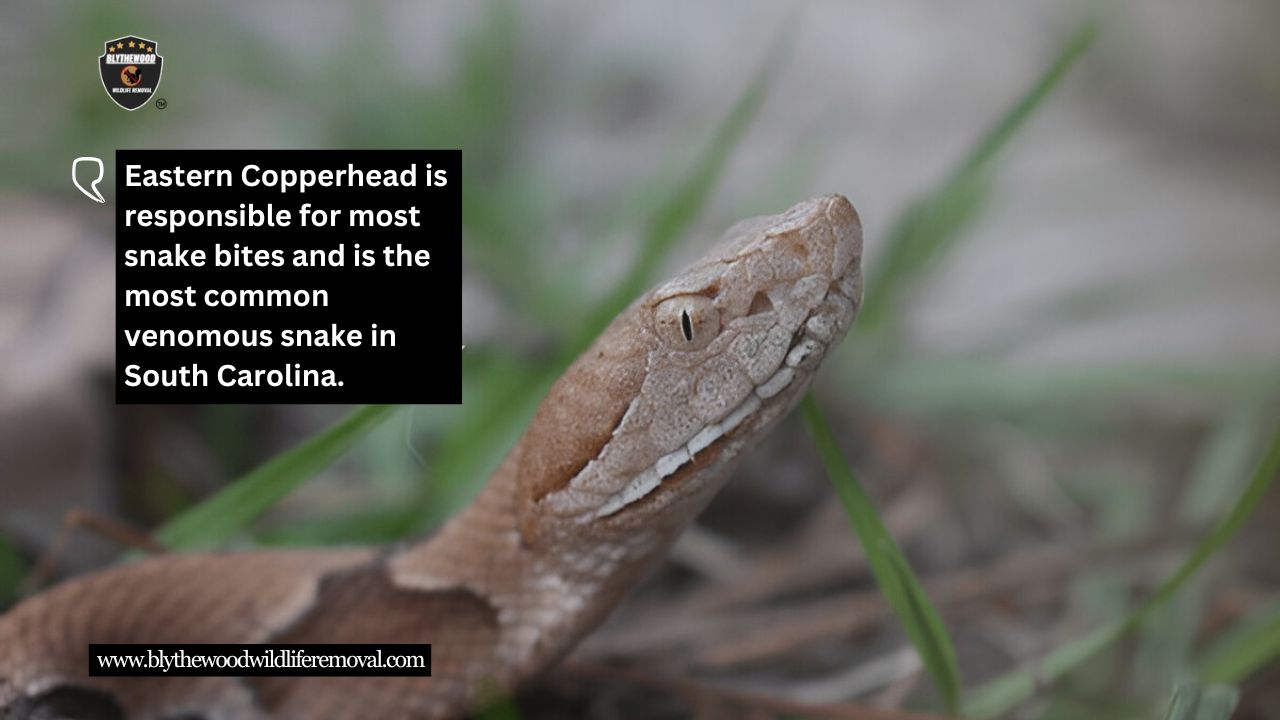
Well, this is the first snake in the list of snakes in various colors and also the first venomous snake. Interestingly, this snake is responsible for most snake bites and is the most common venomous snake in South Carolina.
They usually prey on small rodents, birds, lizards, insects, and frogs.
They can grow up to 53 inches while their average length is 36 inches.
An eastern copperhead is usually brown or reddish brown. If there is an infestation of these snakes in your property, you should consult snake removal experts because these snakes are venomous and dangerous.
Most of the bites happen when someone accidentally steps on them. This happens because of their skin color, camouflaging them in the forest.
Timber Rattlesnake
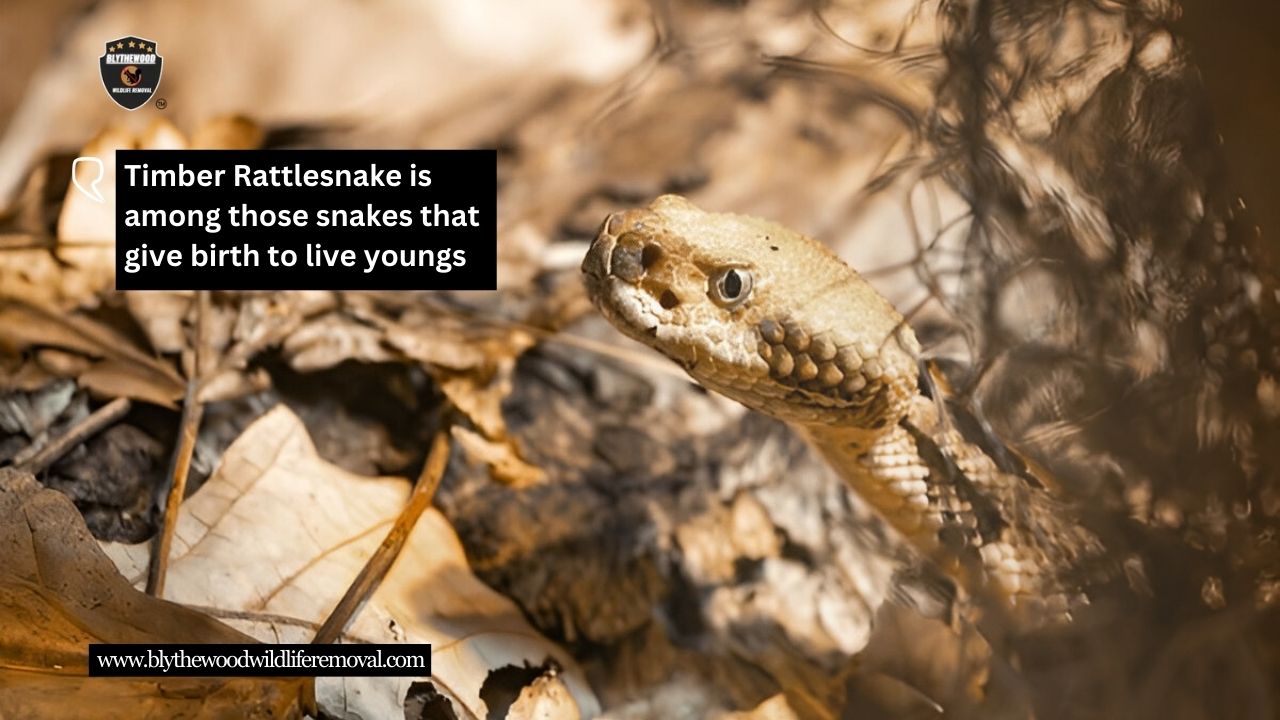
This is the first rattlesnake on the list. It can grow up to 60 inches! They are often brown, yellow, grey, and black. They have blotches on their back that are usually darker than their body color.
Like all other rattlesnakes, timber is also venomous. Among our list of brown snakes in South Carolina, this is the first snake whose venom is potent enough to kill a human. However, antivenom can treat it if given at the right time.
They are primarily found in forests and rocky hills. So, if you plan to go camping or hiking, learn about the area thoroughly and be prepared for any encounter.
But the good thing is that they are not so aggressive.
Eastern Diamondback Rattlesnake
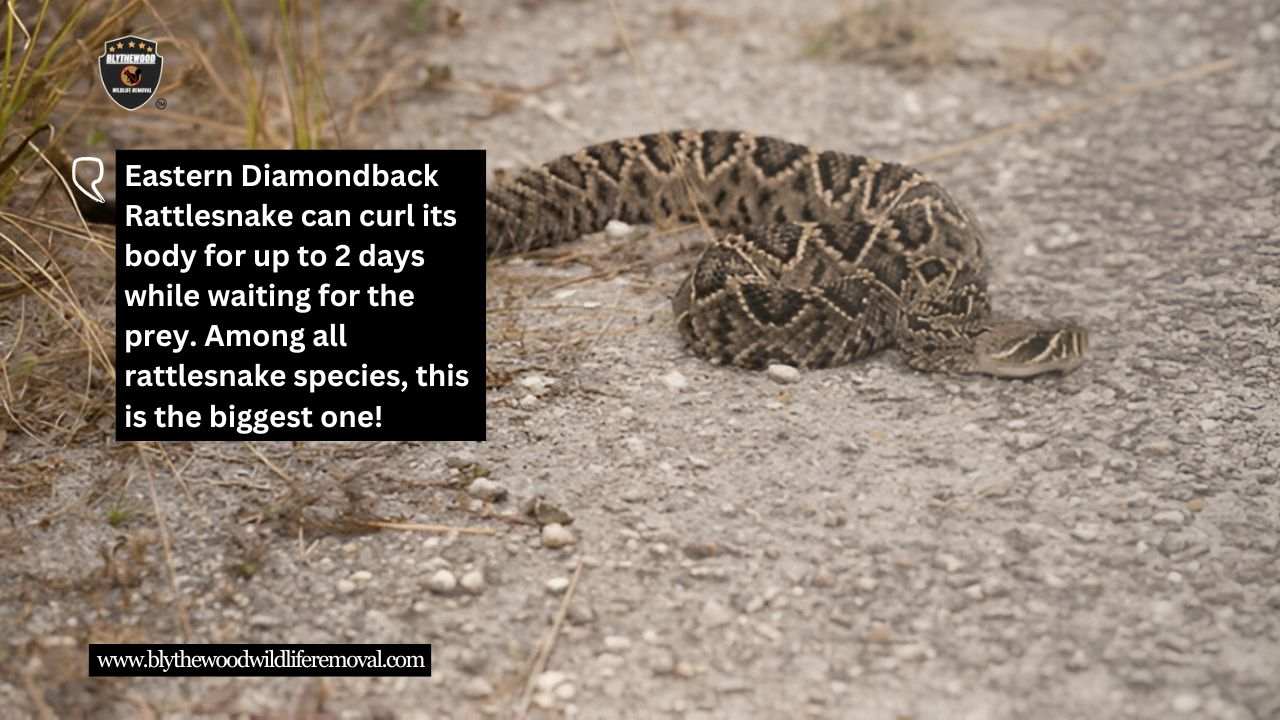
This is the most venomous snake among brown snakes in South Carolina. Due to the diamond-shaped patches on its body, it is known as the Diamondback rattlesnake.
Among other dangerous snakes in South Carolina, it is highly aggressive and very dangerous for pets and humans.
Their heavy bodies can reach up to 8 feet! And that is why they are among the most feared snakes in SC. Interestingly, it can strike almost two-thirds of its body’s length.
Their venom can kill a human. This snake can curl its body for up to 2 days while waiting for the prey. Among all rattlesnake species, this is the biggest one!
Cottonmouth
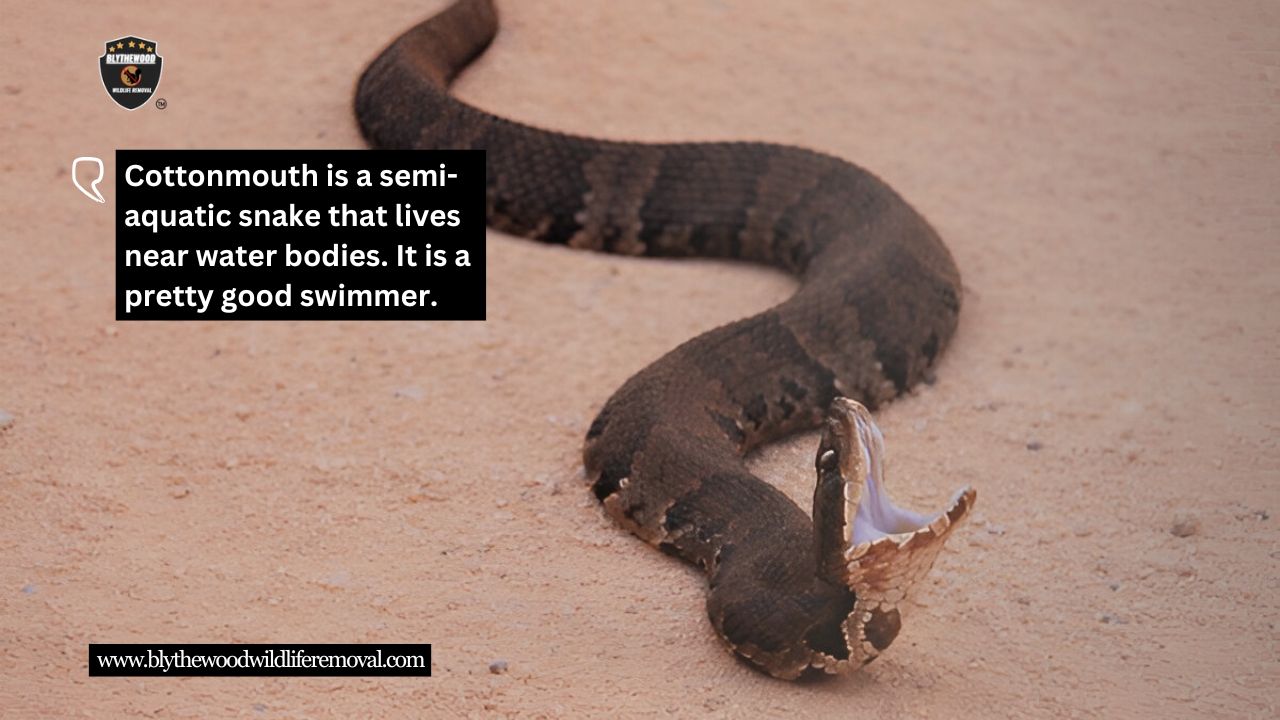
Water Moccasin, also known as cottonmouth due to its cotton-colored mouth, is a semi-aquatic snake that lives near water bodies. It is a pretty good swimmer.
It is often mistaken for “common watersnake”, which is non-venomous. Cottonmouths are often black or dark olive-brown.
Cottonmouths can grow up to 75 inches (maximum), but their usual length is 42 inches. Like diamondbacks, cottonmouths are heavy-bodied snakes.
Their diet primarily consists of toads, salamanders, frogs, amphibians, rodents, lizards, and small alligators.
Although deaths are rare, it has a dangerous venom which can destroy skin tissues.
Pygmy Rattlesnake
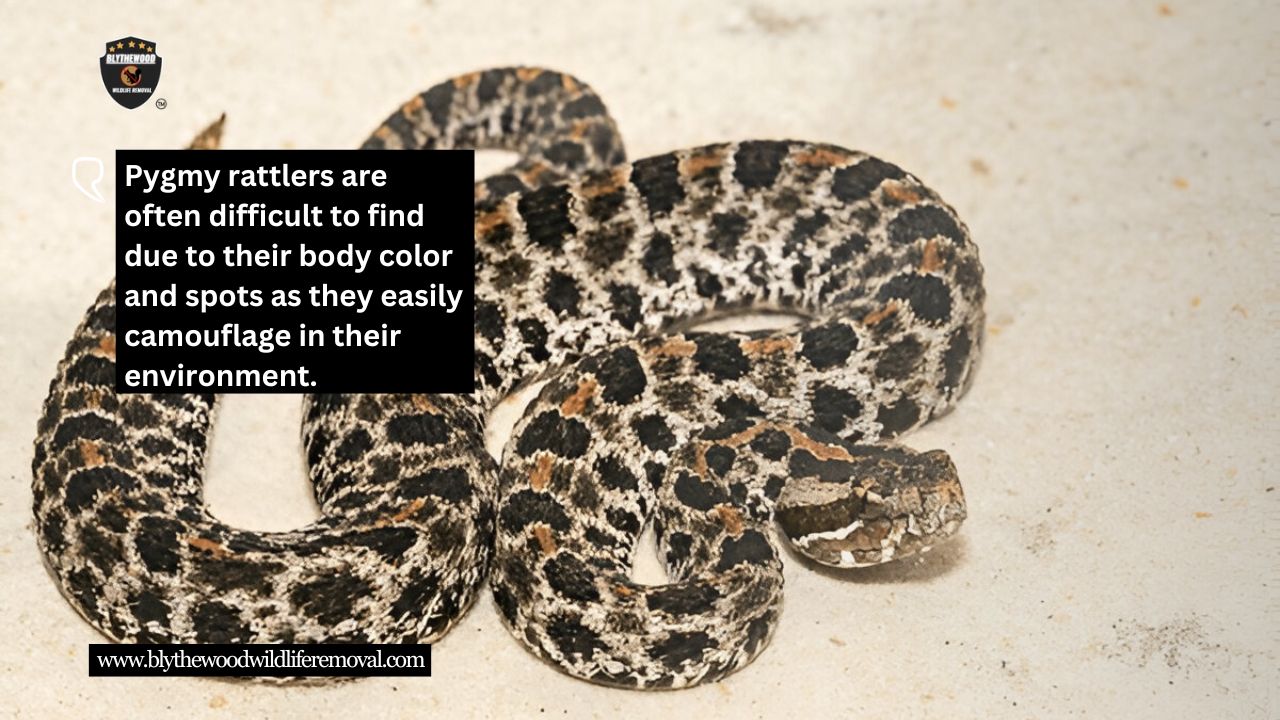
It is not always brown but can be found in a brown color. Pygmy rattlesnakes can also have gray, lavender, or orange backs with dark patches.
This venomous brown snake in South Carolina is smaller than other venomous snakes in the same area. They can grow up to 24 inches.
It preys upon lizards, frogs, rodents, birds, and insects.
Pygmy rattlers are often difficult to find due to their body color and spots as they easily camouflage in their environment.
An unintentional encounter or stepping on this snake can result in a defensive bite. Their bites are often dry, but envenomation and severe damage require antivenom for treatment.
Eastern Hognose Snake
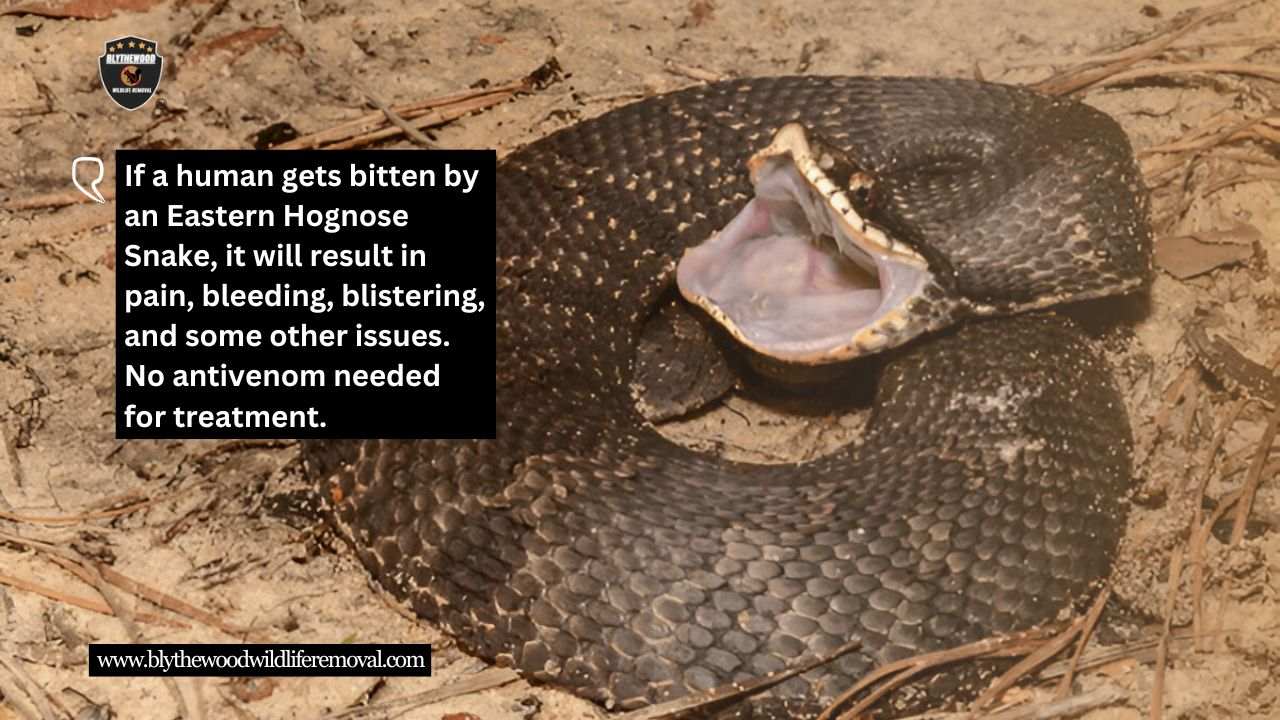
This snake is unique among other brown snakes in South Carolina because of its pointed snout and flattened head and neck ribs, which makes it look like a cobra!
Eastern hognose snakes have a brown, black, grey, or green body with dark spots. Their usual size is 33 inches. They prefer living in loose soil.
It is slightly venomous but cannot cause significant harm. It’s saliva contains toxic chemicals to subdue the opponent. If a human gets bitten, it will result in pain, bleeding, blistering, and some other issues. No antivenom needed for treatment.
They mostly feed on small mammals, frogs, insects, birds, and rodents (especially in captivity).
They flatten their neck when they feel threatened to scare their opponent. They have several predators, including humans (hunt).
They can live up to 15 years in captivity.
Pine Woods Snake
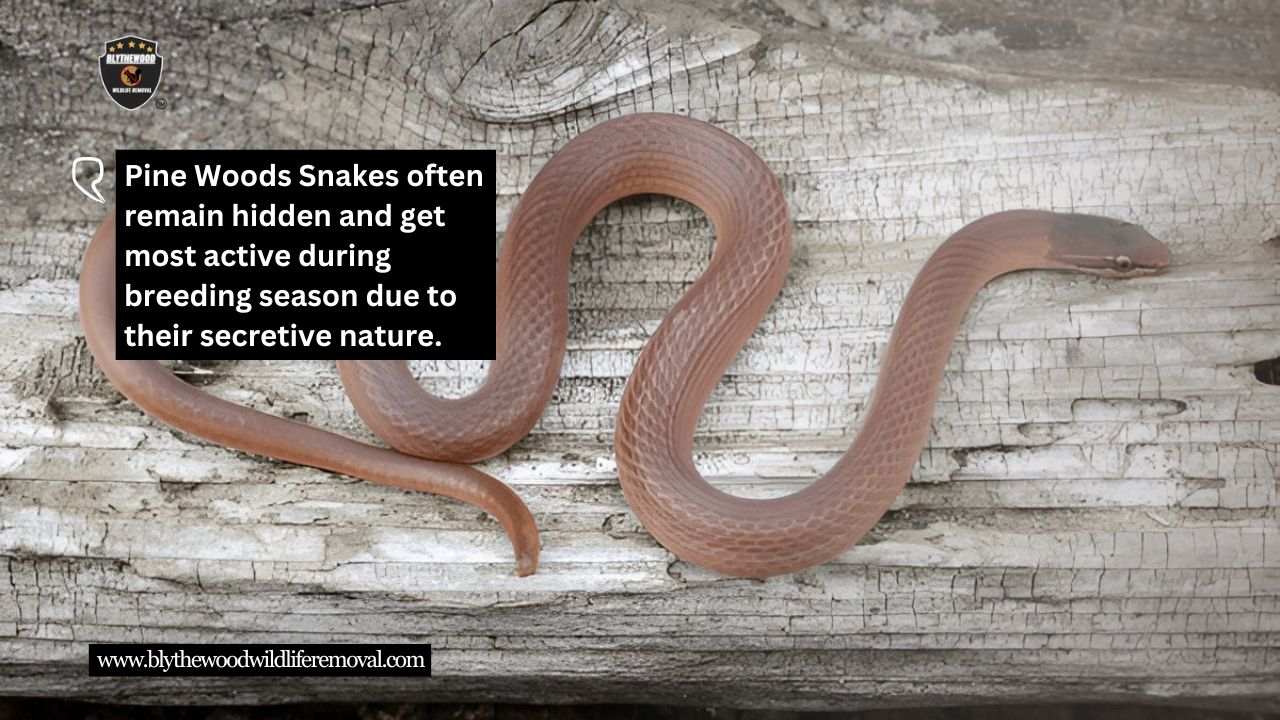
This snake has a uniformly reddish-brown or reddish-orange body which can grow up to 13 inches.
They are found in pine forests, woodlands, and damp areas. They prefer living under tree barks, rotting logs, and leaf litter.
It is a small and harmless snake that does not possess venom. Like the eastern hognose snake, it has fangs that can deliver a small amount of toxin to subdue prey. Still, it is not dangerous and prefers to escape when it feels threatened instead of biting.
They often remain hidden and get most active during breeding season due to their secretive nature.
Eastern Coachwhip

Well, this is a pretty interesting snake due to the color pattern.
The start of its head and neck is often dark (often black), and the tail is light. Two-thirds of its front is black or dark brown, while the rest of the body is reddish-brown or tan.
An eastern coachwhip usually grows up to 6 feet but can reach up to 8.5 feet.
It feeds on lizards, birds, insects, rodents, and other species of snakes.
In defence, they can bite and will strike repeatedly. They are ambush predators and among the fastest reptiles.
Despite their large size and aggression, they are not venomous. Still, it is dangerous to have it on your property.
What should you do if you want to get rid of them?
Most of the snakes on this list are either small or non-venomous. Five of them are venomous. Still, it is often better to stay away from snakes.
What if there are snakes living on your property? What to do then? Well, calling Blythewood Wildlife Removal should be your top priority.
We are experts in handling and removing snakes from any place. Call our experts at 1-803-760-9166, and they will inspect your property thoroughly to address the condition. Get our help today for peace of mind.
- Difference Between Animal Control and Wildlife Removal: What Homeowners Need to Know - November 18, 2025
- What Animals Are Common in South Carolina Attics - November 18, 2025
- Best Time of Year for Wildlife Removal in South Carolina - November 18, 2025


